![]()
![]()
![]()
Use LEFT and RIGHT arrow keys to navigate between flashcards;
Use UP and DOWN arrow keys to flip the card;
H to show hint;
A reads text to speech;
12 Cards in this Set
- Front
- Back
|
Family and common names of Wucheraria bancrofti, Onchocerca volvulus, and Dirofilaria immitis?
|
These three are the "filarial worms"
Onchocercidae: Wucheraria bancrofti and Onchocerca volvulus Dirofilariidae: Dirofilaria immitis |
|
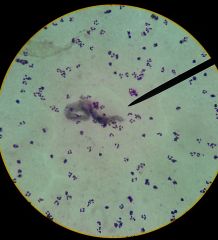
Wucheraria bancrofti description
Pictured: microfilaria in blood. one of two slides for this |
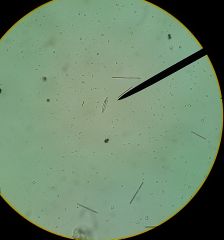
pictured: the only other slide, larvea aka juveniles/microfilaria
|
|
|
Wucheraria bancrofti life cycle
|
Ovoviviparous. Juveniles called microfilariae, migrate to blood vessels in skin at night so mosquitos can pick up.
In mosquito, travel to gut and becme filariform juveniles. Mosquito infects new host, juveniles migrate via lymphatics to regional lymph node |
|
|
Wucheraria bancrofti: geography
|
tropics? depends upon mosquitoes. For sure: Tanzania, Philippines
|
|
|
Onchocerca volvulus description
|
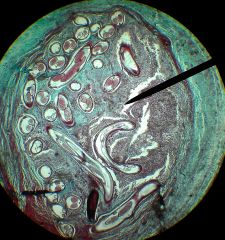
River blindness parasite
nothing in lab book about this, nothing mentioned in lecture. Pictured: Nodule. This is the only slide for this species to know. |
|
|
Onchocerca volvulus geography
|
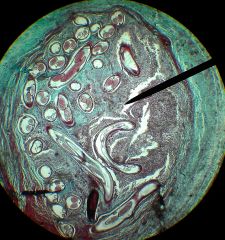
Spreading from Africa to South America and northward
|
|
|
Onchocerca volvulus life cycle
|
Definitive host: humans
Adults live under skin and form nodules. nodules contain microfilaria. black fly bites human and picks them up. Parasite migrates to muscles of fly, 2x molts takes place resulting in infective filariform juveniles migrates to mouthparts to infect new human host |
|
|
Ochocerca volvulus pathogenesis
|
nodules result of immune response. they form where insects of a region like to bite (below waist in africa, above in Central america)
can cause blindness, skin lesions but not fatal usually |
|
|
Dirofilariidae: Dirofilaria immitis description
|
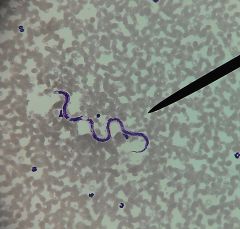
Dog heartworm
very long, slender. pictured: microfilaria in blood. This is the only slide. |
|
|
Dirofilaria immitis pathogenesis
|
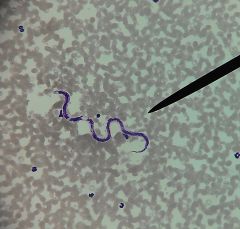
up to 100 can occur in same animal, may block heart
prevalent in eastern seaboard and southern half of US infective of cats, foxes, wolves, coyotes |
|
|
Dirofilaria immitis: males vs females?
size? papillae? |
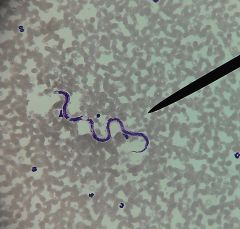
males up to 200mm, females 310mm
males have tapered spirally coiled tail males have 5 pairs of preanal papillae females tail is blunt, vulva just posterior to esophagus uteri and ovaries fill body of gravid females |
|
|
Life cycle of Dirofilaria immitis
|
Unsheathed microfilariae liberated in blood of heart carried throughout body
mosquitoes bite, pick up the microfilariae. They migrate from intestine to Malpighian tubules & dev into hilariously named "sausage stage" then to J3 stage infective juveniles and migrate to proboscis. Mosquito bites dog, then immitis spends time developing in tissues before entering blood vessels to go to heart |

